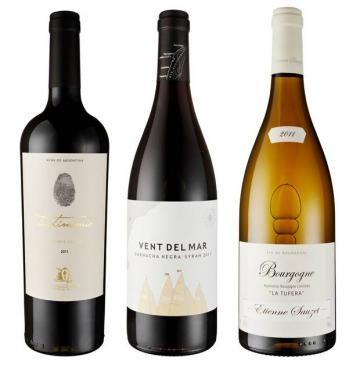Grape Expectations
POSTED ON 18/01/2014If you came across the encyclopaedic Wine Grapes (Allen Lane) in 2013, you could be forgiven for thinking that the reason for the astonishing complexity of wine lies in its vast storehouse of grape varieties with their myriad aromas and flavours: no fewer than 1,368 at the last count of Jancis Robinson MW and her co-authors José Vouillamoz and Julia Harding MW.
It’s true that every grape has its own distinct aroma and flavour DNA. Each makes its own contribution, no matter how little of it is planted. Like the difference between mushrooms and white truffles, there’s a bewildering hierarchy of grape quality. Don’t expect too much from carignan, pinot grigio or trebbiano. Expect the earth from riesling, cabernet sauvignon and pinot noir.
The effect of labelling wine by grape and the revival of native varieties has massively extended the repertoire of choice. One of the effects of the trend can be seen in ranges such as Marks & Spencer’s Eastern Mediterranean selection, with the introduction, among others, of an aromatic, vivid damson fresh and savoury Turkish 2012 Sevilen Oküzgözü, £9.99, and from Georgia, an appetizingly perfumed spicy blackberryish 2012 Château Mukhrani Saperavi, £9.49.
You don’t have to go to the Middle East though to see that the diversity of grape variety is growing under our own noses. In Italy for instance, wines such as the crisp dry, mineral 2011 Planeta Carricante, £17.50, Great Western Wine, and the lively apple and pear-rich 2012 Fiano di Avellino, Terredora, £17.95, Jeroboams, are giving Italian whites a new lease of life. With godello and mencía among rising Spanish stars, nerello mascalese in Sicily, blaufränkisch in Austria, tannat and gros manseng in France’s South West, to mention just a few, the choice continues to grow.
While this expanding palette of grape varieties is making its mark on our palates, it would be a mistake however to equate diversity with complexity. Depending on location and the producer’s objective, the same grape variety, or blends of different varieties, can produce anything from the most simple to the most supremely complex.
Look how the humble palomino grape is transformed into great sherry such as the brilliant, savoury Fernando de Castilla Fino en rama, £9.50 - £9.99, half-bottle, Noel Young (0122 356 6744), (Hennings (01798343021). Or how the unsung savagnin grape of the Jura can make such a brilliant, complex and nutty dry white such as the 2006 Arbois Vin Jaune La Vasée, Domaine Tissot, £59, Berry Bros. (08002802440).
There is all the difference in the world between a chardonnay from Chablis and one from Australia, a syrah from the Rhône and a shiraz (same grape) from Australia. Next time you toast ‘vive la différence’, remember grape variety is just one of the building blocks of great wine.
 Something for The Weekend
Something for The Weekend
Something for the Weekend 18 January 2014
Night In
2011 Luigi Bosca Testimonio, Mendoza
This intensely flavoured Argentinian blend of cabernet sauvignon, syrah and tannat displays oodles of juicy ripe plum and mulberry fruit with an attractive veneer of spicy oak and deliciously savoury aftertaste. £13.99, buy 2 = £7.99, until 3 February, Majestic.
Dinner Party
2012 Vent del Mar Garnacha Negra Syrah, Terra Alta, Bodegas Abanico
A new wave Spanish red combining garnacha with syrah to bring a powerful richness of blackberry fruitiness to a blend that’s nicely rounded out by oak and etched with juicy acidity. £11.99, Laithwaites (08451947720).
Splash Out
2011 Bourgogne Blanc La Tufera, Domaine Etienne Sauzet
From one of white Burgundy’s too producers, this is a cut off the Puligny Montrachet block, a rich complex peachy chardonnay showing a combination of elegant dry mineral character and barrel-fermentation-derived nuttiness on the aftertaste. £19.20 Jeroboams.

